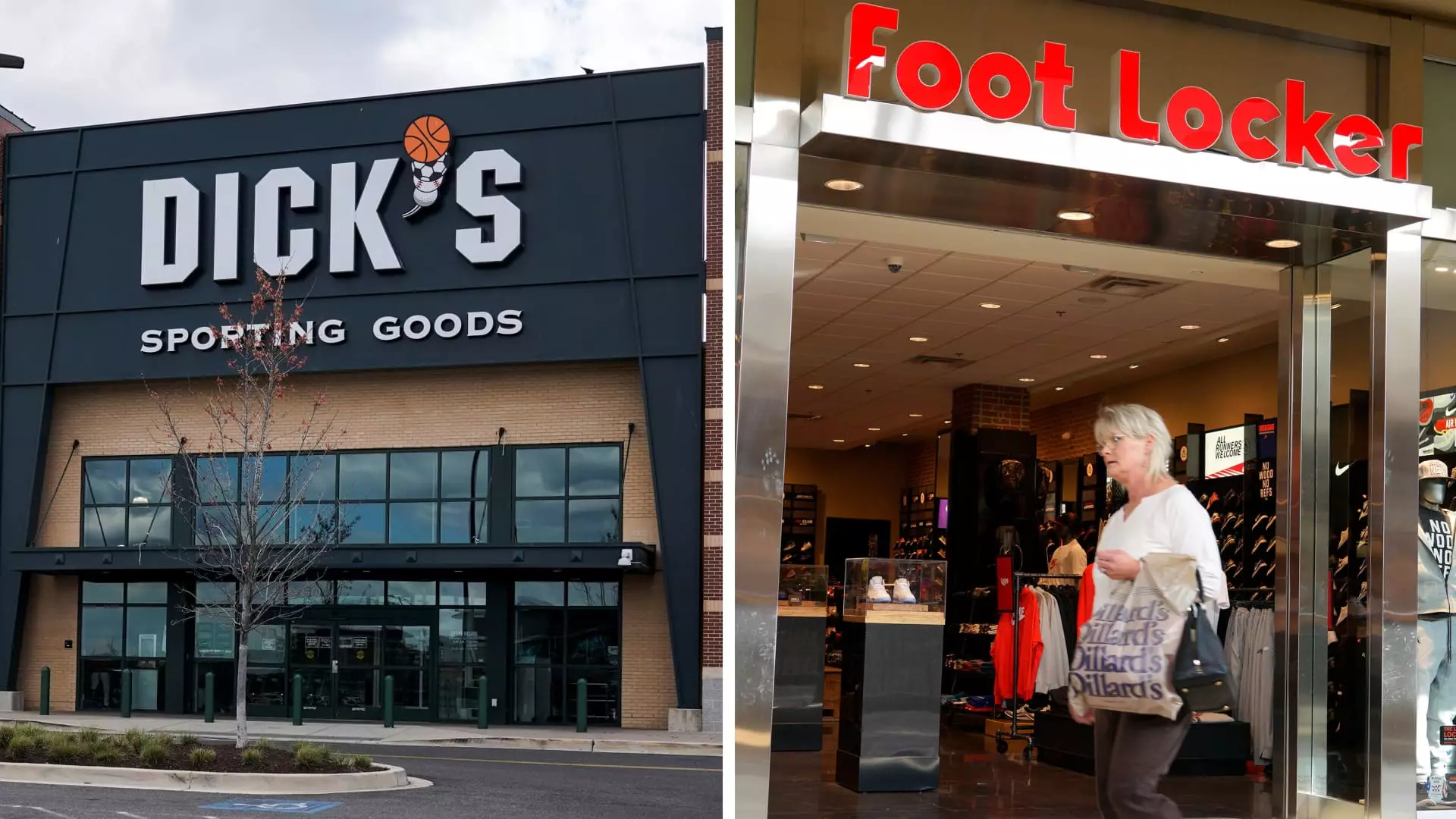In a move that has sent shockwaves through the retail industry, Dick’s Sporting Goods has announced its intention to acquire rival Foot Locker in a deal valued at $2.4 billion. This acquisition is portrayed as a strategic maneuver to expand both companies’ market reach, particularly in the lucrative athletic shoe market dominated by brands like Nike. However, while Wall Street analysts and corporate executives dress this acquisition in the finest suits of optimism, a closer inspection reveals underlying issues that could make this merger a spectacular miscalculation.
Although mergers and acquisitions are often hailed as golden opportunities to dominate a market, they frequently mask significant risks. Dick’s CEO Lauren Hobart has taken to the airwaves singing praises about the strategic rationale behind this deal, but it’s hard not to feel that this might be a case of corporate ambition outpacing market realities.
Chasing Shadows: The Illusion of Synergy
One of the most trumpeted benefits of any acquisition is the promise of synergy—the idea that two businesses together will inherently create greater value than they would independently. While Dick’s claims it can generate between $100 million and $125 million in cost synergies through this acquisition, the historically precarious nature of mergers in the retail sector raises eyebrows. Analysts, including TD Cowen’s John Kernan, have labeled this venture as a “strategic mistake.” Kernan articulated the historical pattern: M&A often results not in growth but in financial destruction, particularly in retail, which has seen countless examples of deals that have ended in tears for shareholders.
What’s particularly alarming is Foot Locker’s recent performance. The ailing retailer has been scrambling under heavy debt and declining sales, reporting a comparable sales drop of 2.6% in its latest fiscal quarter. While Dick’s aims to operate Foot Locker as a separate entity, who truly believes that a struggling brand can seamlessly contribute to the health of a more stable partner? Molding Foot Locker into an effective arm of a larger organization may ultimately prove to be more akin to patchwork than any elegant fabric.
Consumer Confusion: Market Perceptions Matter
A notable line from Hobart during the acquisition conference call asserted that consumers “may or may not know that Dick’s and Foot Locker are one.” This remark encapsulates a fundamental flaw in their thinking. The consumer identity is paramount in retail; it’s not just a matter of numbers or brands but deep emotional connections that customers build with a store. Foot Locker’s demographic skews younger and more urban, while Dick’s clientele is largely affluent and older. The stark contrast begs the question: will these distinctly different brands and consumer bases truly coexist harmoniously?
Ingrained consumer loyalty can be one of the most difficult things to shift, and mixing two diverse brand identities could actually alienate consumers rather than cultivate a larger customer base. In an environment where the competition is about more than just price, but about lifestyle and culture, Dick’s has to navigate these waters with utmost caution.
The Regulatory Dilemma: A Red Flag on the Horizon
While Dick’s appears confident that there will be no anti-competitive concerns from the Federal Trade Commission regarding this merger, such optimism blindsides critical thinking. Mergers of this nature invite scrutiny, particularly when two decades-old rivals eliminate direct competition in the marketplace. The overall goal should not simply be acquisition but the fostering of healthy market dynamics that encourage competitiveness and prevent monopolistic behaviors.
Given the current political climate and the expected scrutiny from the regulatory bodies, it is conceivable that this acquisition could stall or even be undone. This raises the specter of reputational damage for both companies at a time when they are trying to reinforce their positions in a declining market.
Financial Risks: The Dark Cloud of Debt
Dick’s has made it clear they plan to finance this acquisition through a mix of cash reserves and new debt. By pouring significant financial resources into Foot Locker, a company that has been flagged as struggling for some time, Dick’s could be setting itself up for downhill trouble. Market volatility and consumer unpredictability have already weighed on Foot Locker’s stock that is down over 41% this year alone.
Moreover, the increasing economic pressures from rising interest rates threaten to burden a potentially faltering merger with more debt. If the growth and revenue forecasts fail to materialize, not only will the proposed synergies become elusive, but also the debt incurred may weigh heavily on Dick’s financial health.
Brand Identity vs. Business Identity: A Dangerous Gamble
In the end, merging two iconic names in sports retail could either be a match made in heaven or a disastrous miscalculation. Early signs suggest that it leans towards the latter. The acquisition attempt obscures the reality that the retail landscape is evolving, with businesses needing to adapt to changing consumer preferences. Rather than prioritizing synergy and market share, the focus should rest on innovation and customer experience.
In a world where the consumer voice is louder than ever, Dick’s $2.4 billion gamble might just silence the very customer base it hopes to attract. The ramifications of this acquisition could extend beyond mere dollars, reshaping the cultural fabric of the sneaker industry for years to come.

